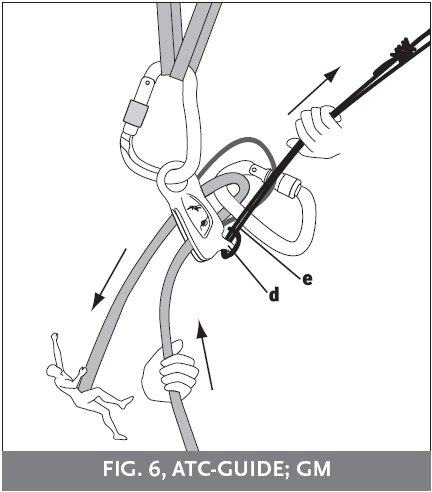

Anchor supplies - cordelette, slings, or just your rope.Belay device (one that can handle belaying from above).Protection - quickdraws for sport, or sufficient gear for trad.Chalk bag (unless you’re one of the crazy few who are above such things).Approach shoes (hopefully light ones, if you’re carrying them with you).Climbing rope (or two, if you need to double-rope rappel).Here’s a basic checklist of what gear you’ll need: Be ready for the terrain that you’ll encounter - that way, you’ll know exactly what to do when you get there.Know exactly what gear you’ll need for the approach, climb, and descent.Look for information on how long you’re going to be on the climb.Ask any friends that have done the climb to give you beta.Have a copy of the topo or guidebook with you when you do the climb.

If you’re rappelling, find out where the anchors are. Study the route - where it begins, where it travels, and where it ends.

#BD ATC GUIDE INSTRUCTIONS HOW TO#
“Maybe they haven’t done enough research about where the climb starts, or where the climb goes, or how to get off the climb. “People typically don’t plan well enough for their route,” he says. Preparation: How to Do Your Homework Properly to Minimize RiskĮric Whewell took special care to point out that much of the work in climbing a multi-pitch route has to take place before the climbing begins. Throughout the article, he’ll be providing the perspective and expertise of a professional. To make sure that we’re providing you with the best possible advice, I hopped on the phone with Eric Whewell, IFMGA-certified guide and Head Guide at Colorado Mountain School. Like much of climbing, these skills are not to be taken lightly. My first ever multi-pitch climb was this aptly-named ramble in Boulder Canyon. And if you happen to live in an area where there’s some approachable multi-pitch sport climbing nearby, lucky you - you have an easier, less-committing venue in which to learn. If you’re a competent single-pitch trad climber, you’re likely well on your way. Learning to place gear and build anchors is beyond the scope of a single article (despite a plethora of books on the subject, the debate on anchors continues to rage). The majority of the multi-pitch climbing in the USA requires trad gear.Find a way to practice the skills you need (more on this later). Understand your systems, your equipment, and your intentions well before you have to put them into practice halfway up a wall. Reading and theorizing are all well and good, but they’re no substitute for practice and understanding.Before We Begin, Two Important Things to Stress We’ll cover the basics of what you need to get going: how to prepare, what gear you’ll need, the step-by-step process of multi-pitch climbing, and other logistical issues. In most areas, multi-pitch climbing unlocks new cliffs and vast amounts of new terrain. One of the magical parts of climbing is that it takes you places where only the birds and the bugs normally go - and for the really tall stuff, you’ll need more than one rope-length to get there. You’re ready to start multi-pitch climbing. You know what an anchor is, you’ve learned how to rappel, and you’re feeling pretty good about your single-pitch self.īut you’re seeing all these Instagram photos of climbers dangling hundreds of feet of the ground, rappelling off of giant cliffs, and topping out huge lines.


 0 kommentar(er)
0 kommentar(er)
